17+ Best Substitutes for Cannellini Beans
When you buy through our links, The Breslin may earn an affiliate commission. Learn more
You are preparing for the meal tonight, but you can’t find any cannellini beans substitutes in your kitchen? What can you do? Don’t panic! I’m writing this article to save you from a cooking disaster!
Take a look around your kitchen and see if there are some other beans that can stand in for cannellini beans in your dish. If you are not so sure about them, check my substitute list below to find out whether your available beans can save your dish!
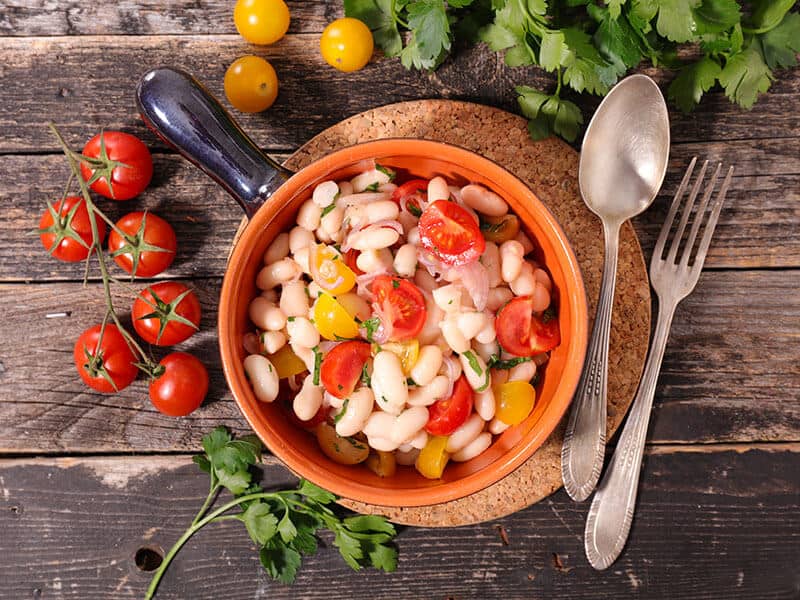
How To Describe Cannellini Beans?
Cannellini beans, also called white kidney beans, are medium-sized white, ovular beans that originate from Italy. It is such a famous species of beans in central and southern Italy, particularly in Tuscany.
Cannellini beans are available in both dried and canned forms. When being cooked, the texture turns from rough to soft and silky. Its taste also becomes nutty and creamy. Canned cannellini beans are added with other additives so that they may taste a bit different.
For the natural flavor, cannellini beans are often purchased uncooked and will be cooked later at home. These beans are so prevalent in white bean varieties that whenever a recipe calls for “white beans,” cannellini beans are regularly chosen.
Cannellini beans are packed with protein, fiber, and various minerals, vitamins. It has low-fat content, so it’s very good for your diet. You can add this bean to your meal every day to receive the nutrient values.
Typically, cannellini beans are used in soups, stews, pasta, salads, sandwiches, stir-fries, and many more dishes. They are versatile and can add a smooth, creamy texture to the dish. You may find these beans in a lot of Italian recipes.

Top 18 Useful Cannellini Beans Substitutes
The best cannellini bean substitutes that you can ever find are below! Every equivalent has a significant advantage to stand in for cannellini beans in a recipe. Scroll down to see if your kitchen contains these brilliant beans!
1. Navy Beans
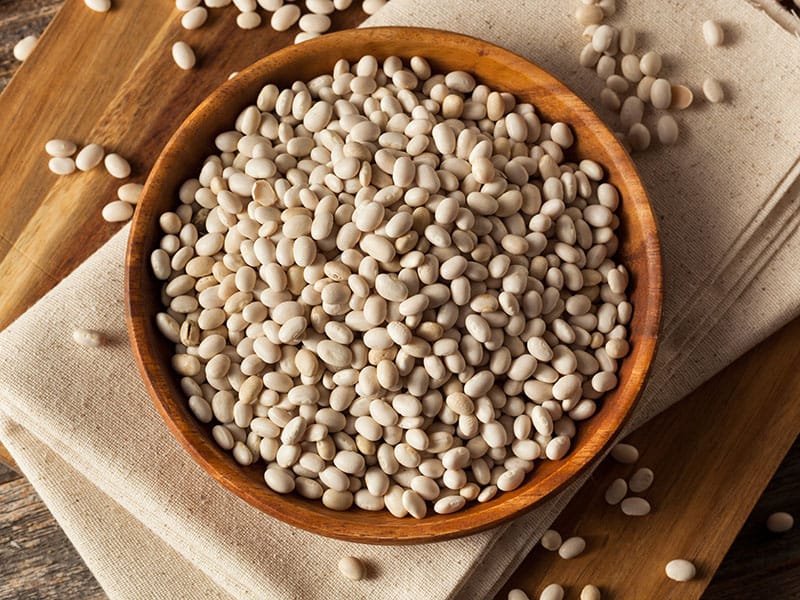
Navy beans, also called pea beans, are the most similar to cannellini beans by texture and taste, so they are perfect for replacing them in most recipes. They consist of a slightly nutty flavor and tender texture. However, their size is smaller than cannellini beans.
Both the skin and flesh of navy beans are harder than cannellini beans, so they’re cooked much slower when they are dried. So, you should watch out for the cooking time when using navy beans in place of cannellini ones. They can take up to 2 hours to be thoroughly cooked.
Navy beans are best used as cannellini beans replacement in soups, stews, dips, and stir-fries. If you happen to have navy beans in the pantry, use them now!
2. Great Northern Beans
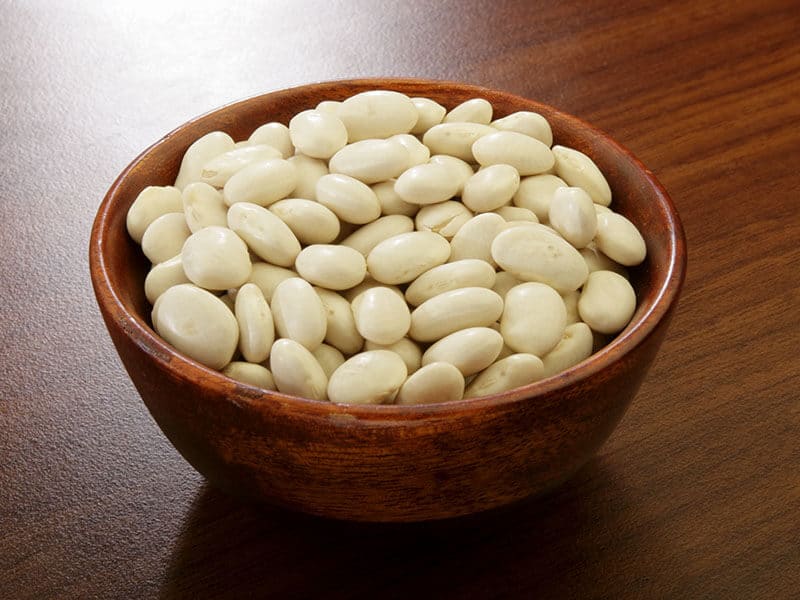
There’s a fun fact that people usually mistake cannellini beans for Great Northern beans because they can not tell the differences between their appearance. The taste is almost the same with a delicate and subtle flavor. They also have firm flesh and grainy texture.
Great Northern beans are undoubtedly one of the most common varieties to stand in for cannellini beans. With steady flesh, they can keep their original shape well after being cooked. So they are perfect for salads that need the whole integrated beans.
For all that reason, Great Northern beans are a brilliant cannellini beans substitute that can replace them in most recipes, such as soups, casseroles, and tartines. They can be cooked perfectly from 45 minutes to an hour.
3. Flageolets
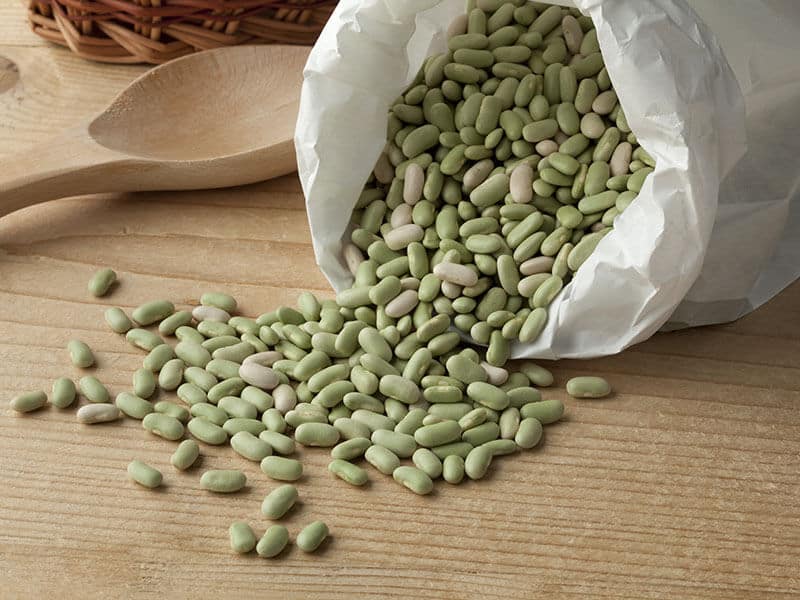
Flageolets originate from France and might be an unfamiliar bean name to some of you. But once you get to know about them, there’s a high chance that you’ll fall in love with them!
Flageolets taste subtle, creamy and velvety, which is quite similar to that of cannellini beans. They also include dense flesh. So they can be an excellent equivalent in most soups, stews, and casserole recipes. It can take flageolets from 1 to 2 hours to be fully cooked through.
There’s just one thing to be concerned about: they are pretty expensive compared to some other beans since they are native to France and hard to find beyond France or Europe. But they are worth trying, so buy and store them in your kitchen for later use!
4. Kidney Beans
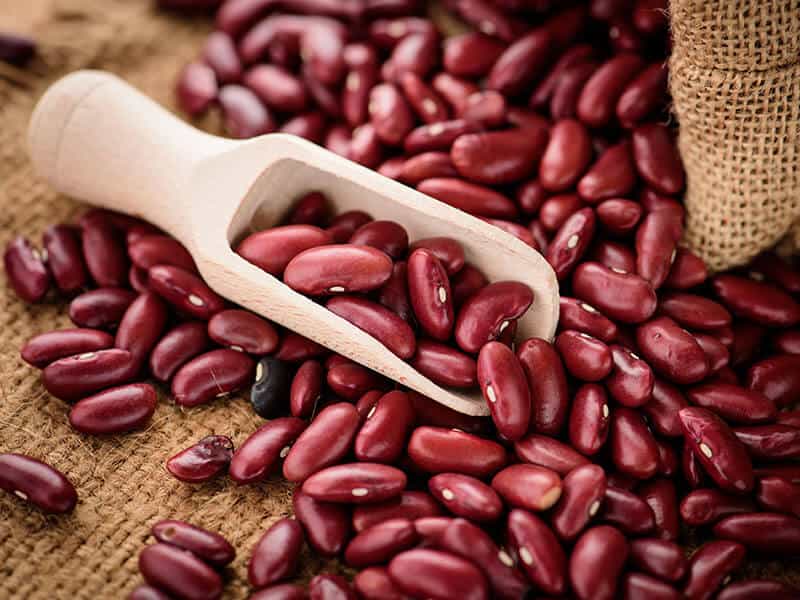
As I mentioned, cannellini beans are also called white kidney beans, so this red type of kidney beans won’t disappoint you! It is famous and can be found in almost every store and supermarket around the world. They consist of firm skin and meaty flesh.
The color seems to be the biggest difference between kidney beans and cannellini beans! Their texture and size are nearly identical. However, the taste of them may be a little apart from each other. Red kidney beans are earthier, grainier, and meatier than the white species.
Kidney beans are best with Mexican dishes, many soups, stir-fries, and salad recipes. You can always use them to sub for cannellini beans in these dishes, where the color is not an important element. Kidney beans will be cooked within 1 hour after being soaked for 6 hours.
Learn how to prepare and cook red kidney beans perfectly!
5. Garbanzo Beans (Chickpeas)
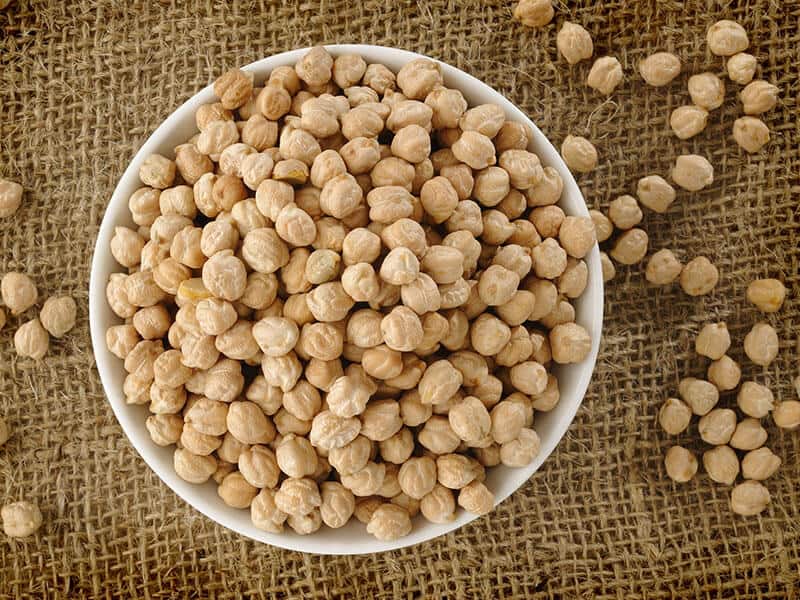
Garbanzo beans, also called chickpeas, are a great source of fiber and protein in many dishes. (1) They have a very dense texture with a nutty note. They can be found in a lot of recipes, from soups to salads to even burgers!
They also have the same ivory color and nutty flavor as cannellini beans, making them suitable for replacing these white beans in the dish. Note that garbanzo beans include skin that should be discarded before cooking. They are cooked for 2 hours from the dried state.
However, though they taste pretty like cannellini beans, garbanzo beans are still a little bit more intense than the white kidney beans. Therefore, you should use fewer garbanzo beans than the number of cannellini beans called for in the recipe.
6. Pinto Beans
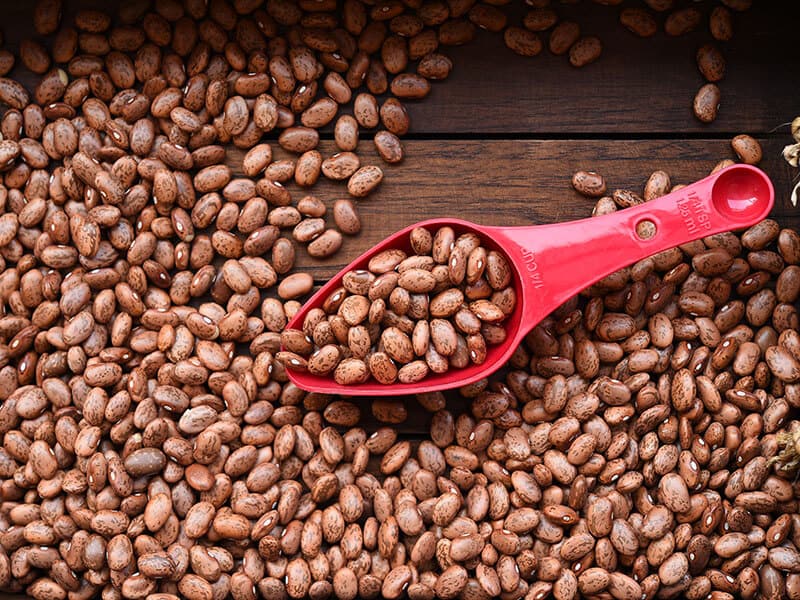
Pinto beans are native to Mexico. They can add more flavors and work really well in spicy Mexican foods, especially burritos. The dried pinto beans can be found in refried beans and chili con carne.
Besides Mexican cuisine, pinto beans are also used in Brazilian and Spanish cuisines. (2) Their taste can be described as nutty, rich, and robust with a tender texture. You can also use the same way you cook cannellini beans to cook pinto beans!
Pinto beans have a deep brown color with dark spots, which is opposite to cannellini beans so that they might change the color of the dish. However, the mild taste will remain the same, so if you don’t notice a lot of the color, just use pinto beans!
7. Fava Beans
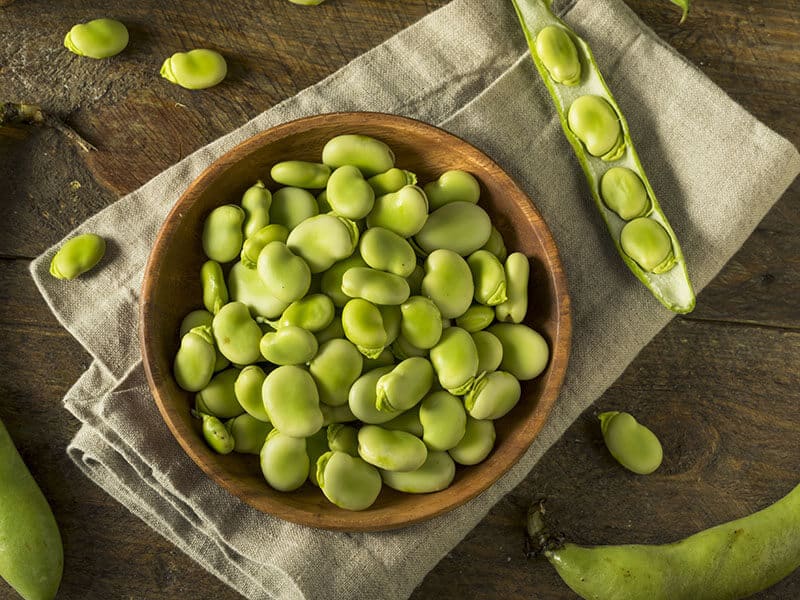
Fava beans are a widely popular and easy-to-cook species of beans. What’s special about them is that they can go well with any spices or seasonings. They appear in a large size, compared to others, with a very meaty texture, and “cheesy,” slightly bitter, savory taste.
Fava beans are packed with nutrients. They are a brilliant source of L-dopa that can support treating mental illnesses, such as Parkinson’s, and many other health advantages. (3) The whole process of cooking fava beans can take from 1 hour to 1 hour and 45 minutes.
Like garbanzo beans, fava beans also consist of skin that is unpleasant to consume. So carefully eliminate the skin after soaking them in water. Then, you can use fava beans instead of cannellini beans and season the dish according to recipe requirements.
8. Black-Eyed Peas
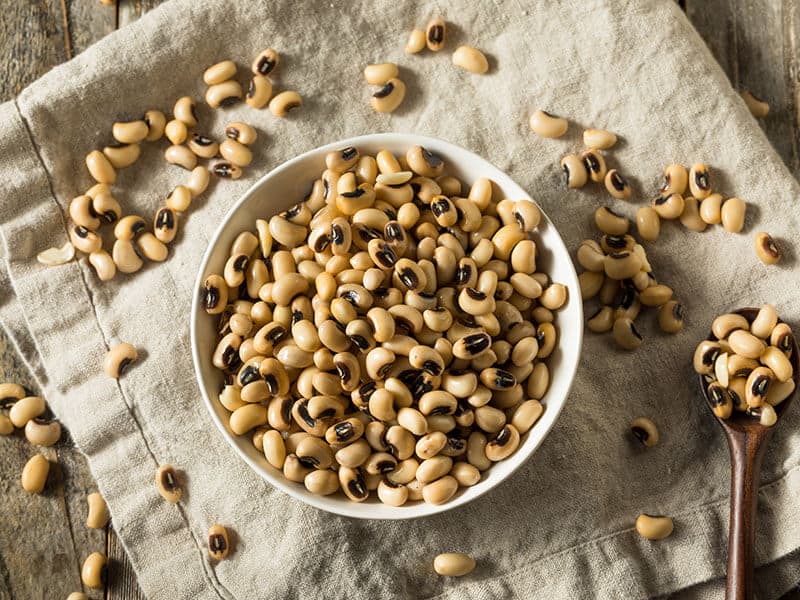
Black-eyed peas are named after their own appearance with white color and one black dot on each pea, which reminds you of an eye. They have a dense and mealy texture. They are mostly cooked and served with meat, grains, veggies, and dishes from Southern cuisine.
Compared to cannellini beans, black-eyed peas also taste earthy, starchy, and beany. It has a very versatile flavor that can be easy to prepare in many different methods of cooking. Therefore, black-eyed peas are good enough to be a cannellini beans alternative.
Some dishes you can replace cannellini beans with black-eyed peas are soups, stews, fritters, salads, etc. They can be simmered in 1 hour to reach a tender texture. They’re easy to find everywhere, so what are you waiting for? Go for it!
You can always use black-eyed peas to cook fritters or replace cannellini beans in other dishes!
9. Anasazi Beans
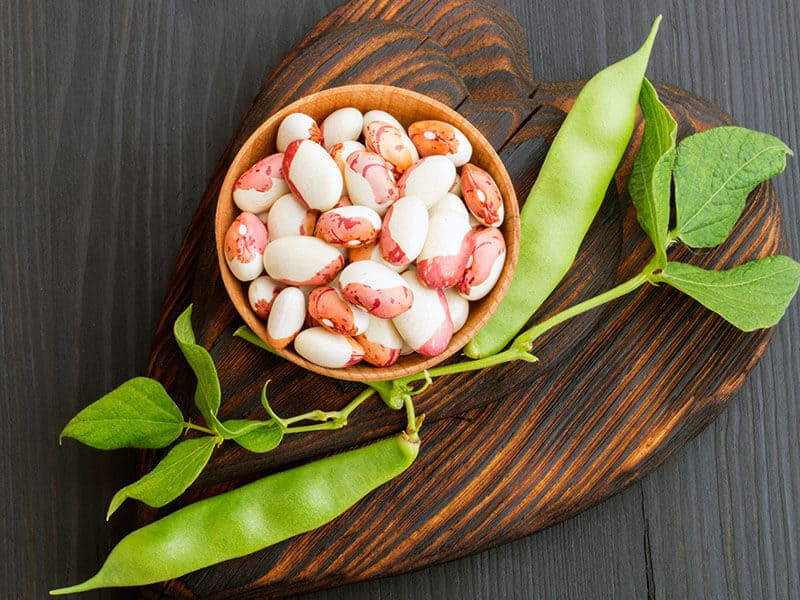
Anasazi beans look so stunning with their unique appearance – burgundy color with ivory flecks. Their size and shape are pretty similar to those of pinto beans. The plants are nowadays grown in Southwest America.
The burgundy shade will turn to light pink when the beans are thoroughly cooked in an hour and a half. When cooked, their flesh texture becomes meaty, and the flavor is slightly sweet, nutty, and subtle. They are usually used in Tex-Mex cuisine, especially baked bean dishes.
Anasazi beans best replace cannellini beans in soup recipes because they can enhance the soup’s flavors very well. They are cooked quickly and don’t need to remove any skin, so you don’t have to prepare too much for them.
10. Soybeans
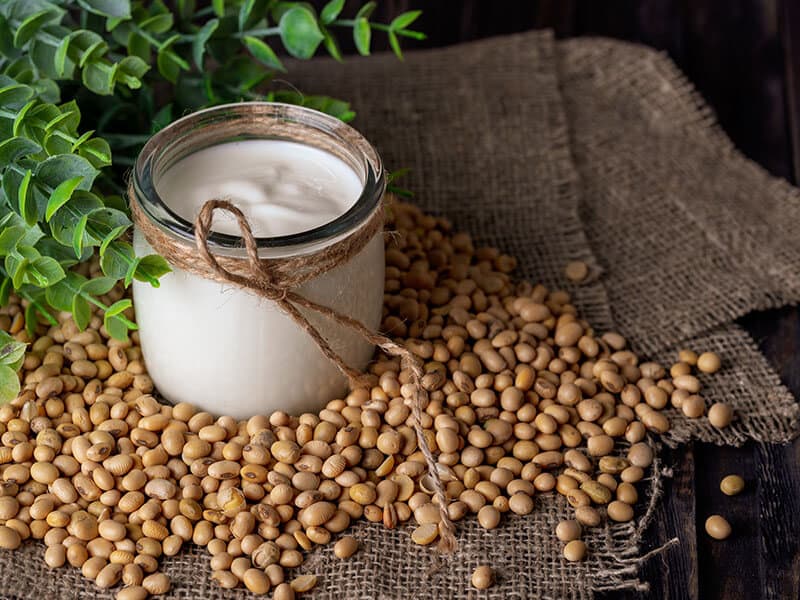
Soybeans are widely known as a key ingredient of tofu and soy milk. They are native to East Asia, where there is the highest consumption of tofu. They are affordable and easy to find in any local market or supermarket in the world.
Soybeans are gluten-free and a wonderful source of protein and dietary fiber. The soybean extract oil is packed with vitamin E and lecithin, which are really good for your immune functions. (4) It may taste to 3 to 4 hours to cook the soybeans thoroughly.
The hulls outside make the texture of soybeans unpleasant and rough. They taste clean and mild, a little bit beany with a hint of sweet and nutty aftertaste. The old tofu made of soybeans may taste a bit chalky.
Soybeans are famous as a meat and dairy alternative in most vegan-friendly dishes because of their meaty taste. They are versatile beans to cook in different ways, especially as a decent equivalent of cannellini beans in most soups and stews.
11. Adzuki Beans
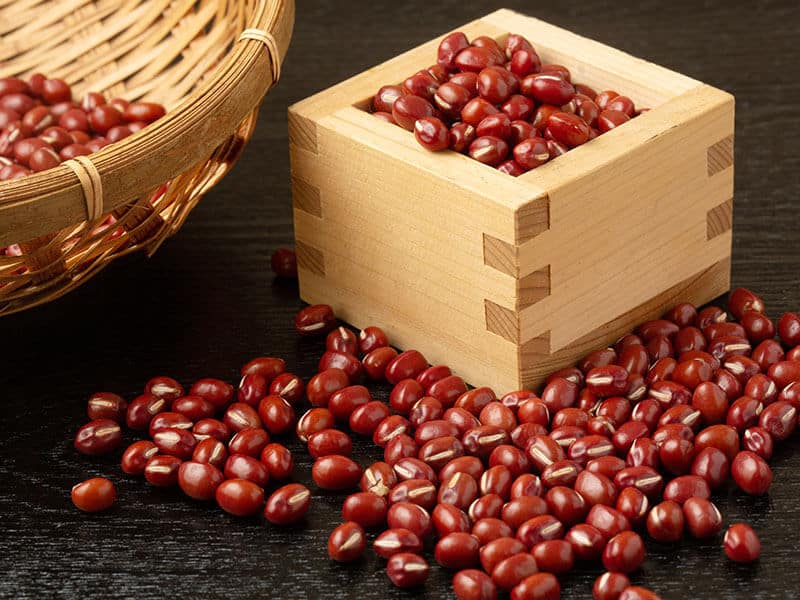
If you happen to know mung beans, you may imagine the taste and texture of adzuki beans since they are literally red mung beans. These red beans are included in a lot of traditional dessert dishes across Asia, especially in China, Korea, and Japan.
Adzuki beans taste pretty sweet; that’s why they are used for many desserts. However, in Western countries, this species is usually used in savory meals such as soups or salads. They can also be cooked with rice for a perfect meal.
Besides the sweetness, adzuki beans also taste nutty and mild, with soft and mealy texture. Therefore, they may be an acceptable substitute for cannellini beans in many dishes. They can be cooked in about 45 minutes to 1 hour, after being soaked.
Make some adzuki bean paste with this Japanese recipe to use in many dishes, especially desserts!
12. Butter Beans
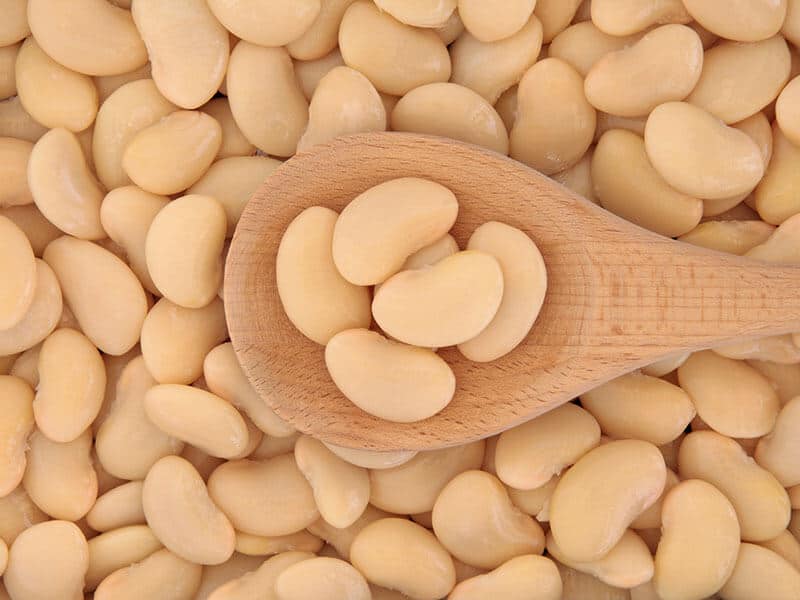
Butter beans are basically small lima beans. They are white, flat beans that can be found in canned packages in most stores or supermarkets. They can be fully cooked faster than cannellini beans within 30 minutes.
If you are into the buttery flavor, you may fall in love with butter beans right away! The strong buttery, fatty taste of them is so pleasant and fragrant that you just want to eat more and more. They also have a pretty smooth and creamy texture.
Butter beans are used in place of cannellini beans in salads, bean soups, or side dishes. It can help enhance the dish’s taste with a buttery and creamy flavor. So if you have butter beans in your kitchen, don’t hesitate to use them!
13. Borlotti Beans
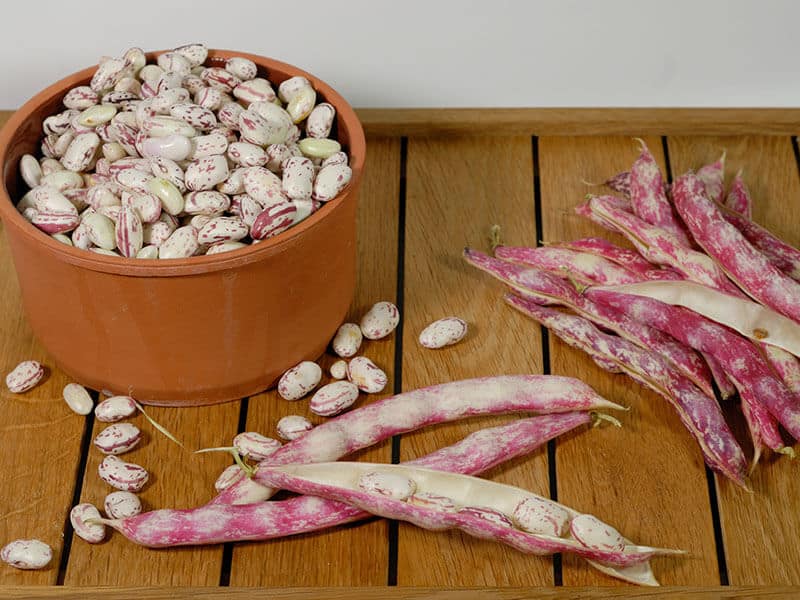
Borlotti beans are also called cranberry beans because of the cranberry-colored speckles on their skin. They include a unique nutty, creamy, sweet taste and firm, silky texture that can easily substitute cannellini beans in diverse dishes.
You can find borlotti beans in Italian and Portuguese cuisines, especially in soups and stewed beans. Unlike many other species of beans, fresh borlotti beans do not need soaking before cooking. They will be perfectly cooked in 1 hour and a half.
Borlotti beans can be a genuine cannellini beans substitute in cold pasta and bean salads. Why don’t you use them for tonight’s meal?
14. Black Beans
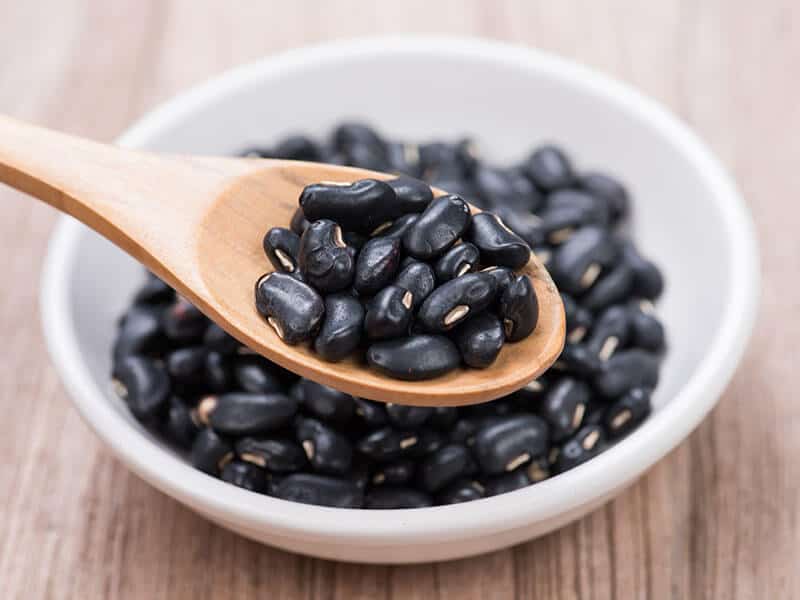
Black beans are so common worldwide that everyone may know about them. They are small beans in black that contain a lot of nutrients. They also taste sweet, nutty, and pleasant with very firm flesh. However, they aren’t considered an ideal replacement for cannellini beans.
The main reason lies in the color of black beans. If you add them to a dish with liquid, they may turn the color of your dish into a darker color that looks not really nice. So when you intend to use black beans, consider this factor before deciding.
Black beans can stand in for cannellini beans in soups, stews, salads, wraps, dipping sauces, or any dish you like if you don’t mind the color problem. They can be cooked well to reach a tender texture in just 30 to 45 minutes.
Black beans are surprisingly healthy beans to include in your dietary meals!
15. Marrow Beans
Marrow beans nowadays are not as popular as they used to, but they can still be found in the Mediterranean and some parts of Italy. When they are fully cooked in about one hour and a half, they will contain very soft and rich flesh.
Marrow beans are plump with a creamy and smooth texture. They taste so meaty that some people resemble them with pork bacon. They will become a good but a bit hard-to-find substitute for cannellini beans.
Boiled beans can also be served as a side dish on the table with some sauces on top. Try many recipes with them and you will be amazed!
16. Baby Lima Beans
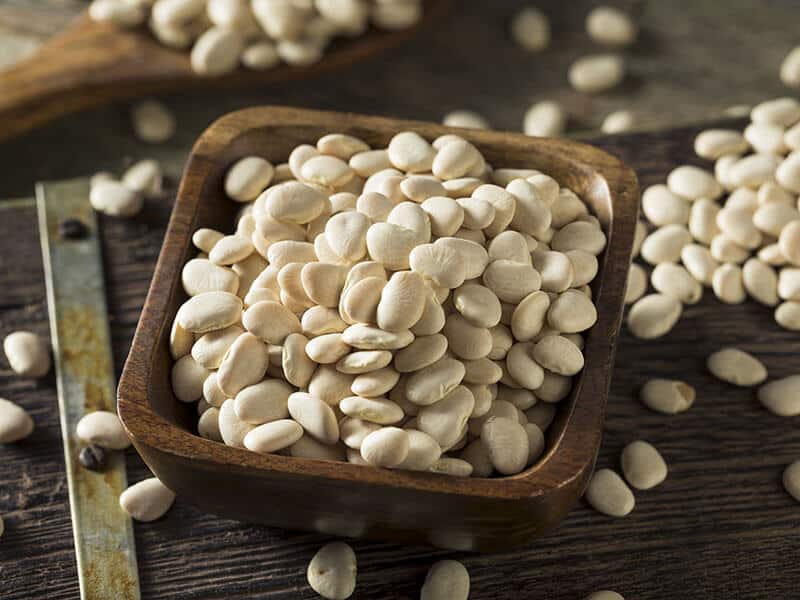
Baby lima beans are much smaller and starchier than cannellini beans. Since they are not aged enough, these baby beans taste really mild, sweet, and buttery. They can be nicely cooked by simmering from 45 minutes to an hour, which is quicker than cannellini beans.
Even though raw baby lima beans have some quite different characteristics, when being cooked, they taste pretty much like cooked cannellini beans. Therefore, it can perfectly replace cannellini beans in most dishes, such as soups, stews, and salads.
17. Lentils
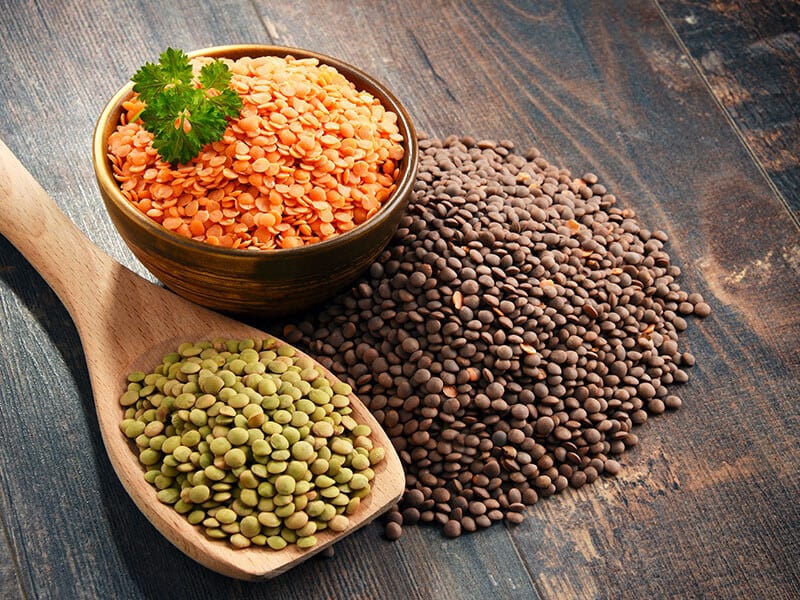
Lentils are special since they appear in many different colors. Each lentil color has its own distinct taste and texture but the same nutritional profile. Colors vary from green to black to brown to red-orange to gold. Most of them have a tender and firm texture.
Any lentil type can be used since they have a peppery, earthy flavor profile comparable to that of cannellini beans. However, the textures are vastly different between them. Lentils go well in a variety of dishes, including soups, stews, and as a meat or fish side dish.
Unlike many other cannellini replacements, lentils don’t need to be soaked beforehand. The boiling time may vary due to the different types of colorful lentils; however, the average cooking time of them is from 40 to 45 minutes.
18. Pink Beans
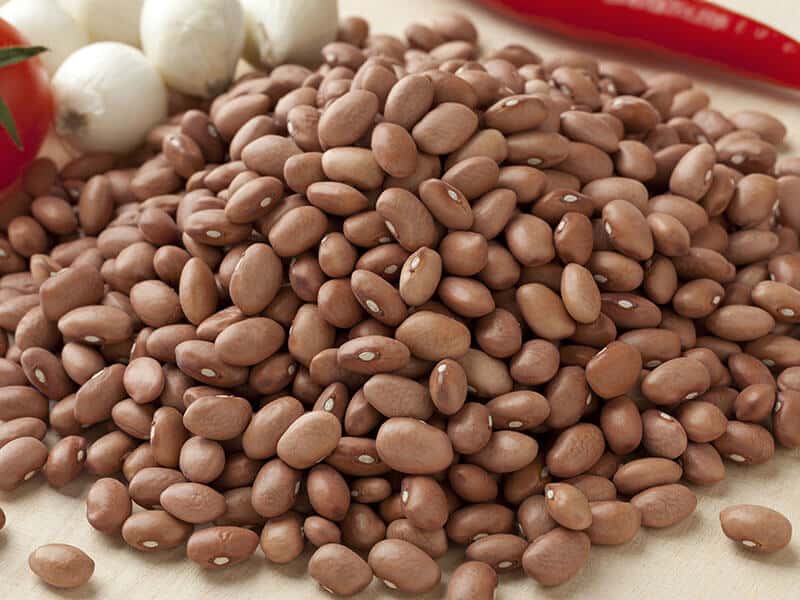
These pink beans with the amazing pink color are so popular in the Western U.S and some Caribbean countries. They are much identical to red kidney beans or pinto beans with a different color. They taste delicate and slightly sweet, with a smooth, chalky texture.
It’s important to note that pink beans are both nutrient- and calorie-dense. These beans, which are high in protein, are ideal for vegans and anybody else looking to increase their protein intake. They are also packed with magnesium, phosphorus, and calcium.
Pink beans should be soaked overnight before cooking, then boil them with some water on the stovetop for about 90 minutes to get thoroughly cooked pink beans. They will be an excellent equivalent of cannellini beans in most dishes that have nothing to do with colors.
FAQs
With all the information about those 18 fantastic substitutes, I believe you’ve chosen a suitable one for your dish! But maybe that’s not all for you. There are still some concerns, right? So here comes the asks and answers section about cannellini beans alternatives!
Are There Any Cannellini Beans Substitutes In Your Life?
Does your kitchen happen to have one of the above replacements for cannellini beans? They are definitely the easiest to find and prepare when you need an authentic bean species to stand in for the missing cannellini beans in tonight’s meal.
Do you find this list helpful for you? If you do, don’t forget to share it with your friends and like my post! Any concerns should be shared by commenting below this post! I will reply to you all and try to solve your problems!
References
- Medicalnewstoday.com.. Chickpeas: Health benefits and nutritional information.
- En.wikipedia.org.. Pinto bean – Wikipedia.
- Healthline.. 10 Impressive Health Benefits of Fava Beans.
- Resources, M. and Nutrition, S.,. Soy Nutrition – North Carolina Soybeans.

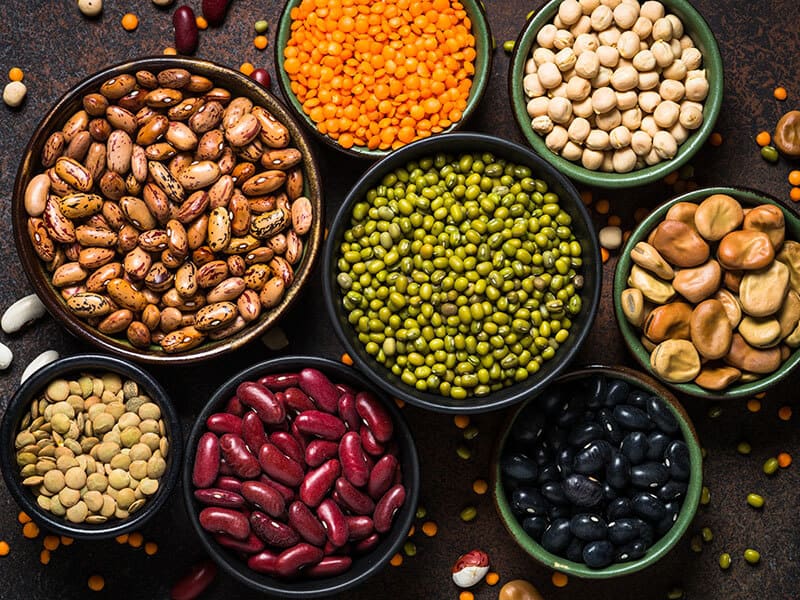


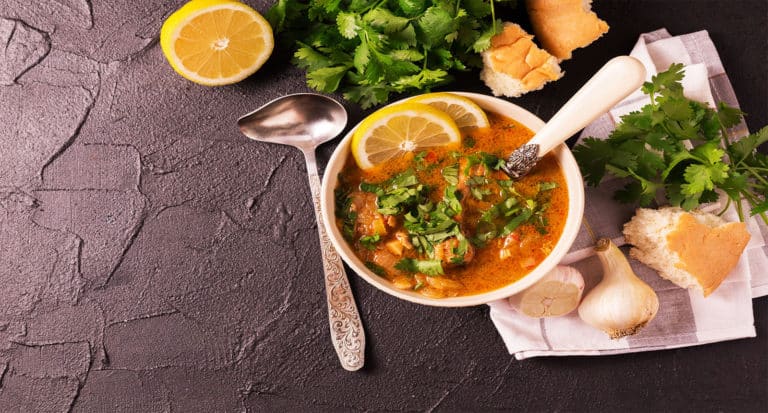
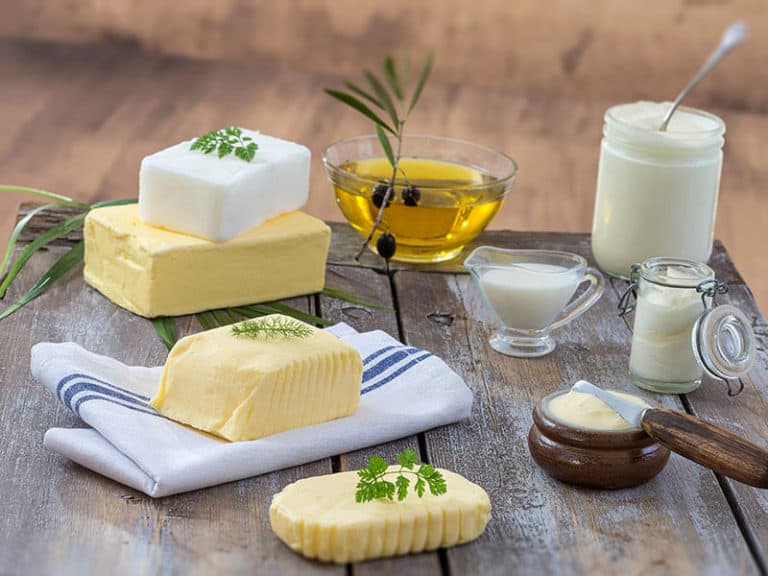
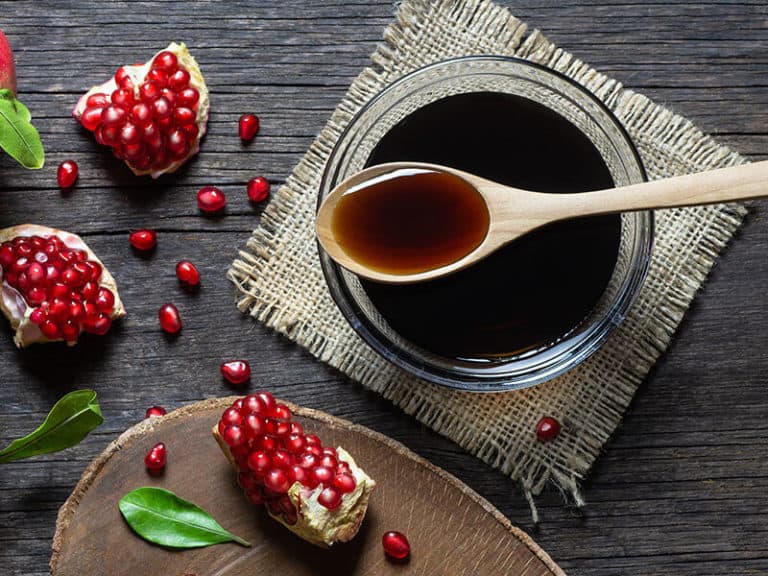
Amanda Collins
Founder and Senior Culinary Editor
Expertise
Culinary Arts and Management, Food Journalism and Critique, Recipe Development and Testing, Global Culinary Traditions, Sustainable Food Practices
Education
Institute of Culinary Education (ICE), New York, NY
Program: Diploma in Culinary Arts
Focus: Intensive hands-on training in culinary techniques, recipe development, and kitchen management, preparing students for professional roles in the culinary industry.
Monroe College, New Rochelle, NY
Program: Associate in Applied Science in Culinary Arts
Focus: Practical culinary skills, including cooking techniques, menu planning, and kitchen operations, with an emphasis on hands-on experience and industry standards.
Amanda Collins is a seasoned chef and food editor with a deep love for global flavors. Trained at the Institute of Culinary Education and Monroe College, and with over 15 years in the culinary field, Amanda has refined her skills in kitchens worldwide. Her background in food studies gives her a unique ability to share both recipes and the cultural stories that shape them.
As senior culinary editor at thebreslin.com, Amanda’s work brings authentic dishes to life, inviting readers to explore new flavors and techniques from around the globe. Her approachable style makes it easy for anyone to bring a bit of the world’s cuisine into their kitchen.